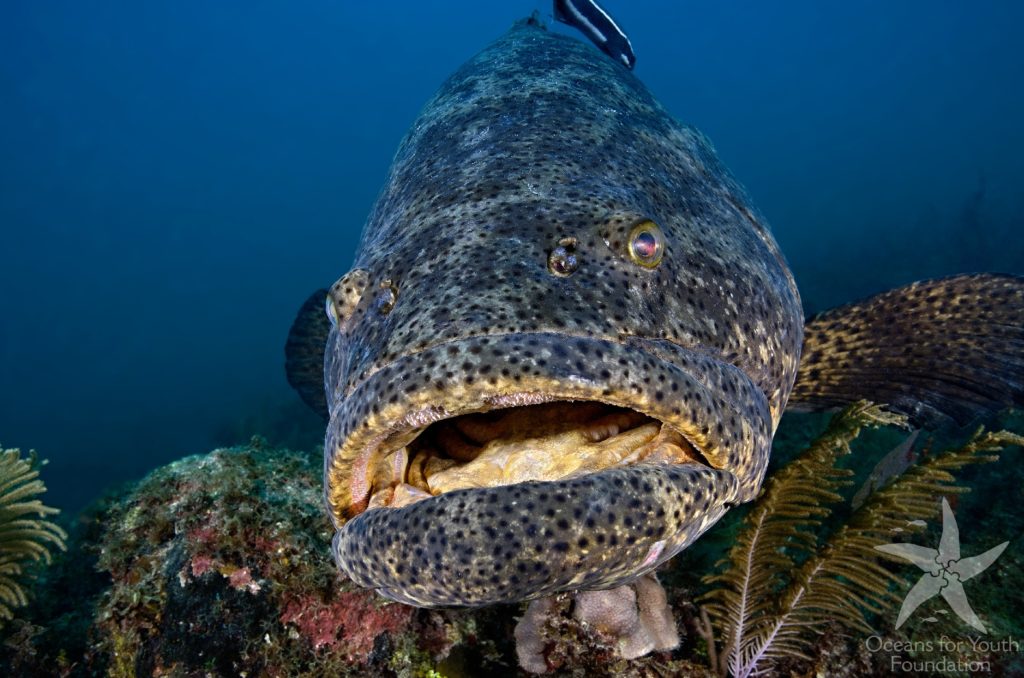By Raquel Gilliland; Sea of Change Intern
It’s time for a new “Creature Feature” where we introduce you to another sea creature and their conservation status. This week’s creature is a large, boney fish commonly known as the Atlantic Goliath grouper (Epinephelus itajara). Goliath groupers are not only legendary for their size but also their charisma; divers in Cayman often say they did not just see a goliath grouper but “met a Goliath grouper”.

Historically known as a highly prized game fish for their fight and size, they were unfortunately almost overfished to extinction by 1980’s with the largest Goliath Grouper weighting in at 800lbs! They have an interesting history, in that they are loved by divers as a tourist attraction while being viewed by many commercial, recreational, and spear fisherman as a pesky, fish-steeling monster. In an effort to reverse their population decline from over-fishing, the goliath grouper fishery has been closed in the southeast region of Florida since 1990, and the species is now listed as a species of concern by the IUNC Red List of Endangered and Threatened Species.
Goliath groupers are usually solitary animals and quite territorial, however they do congregate in numbers of 100 or more for spawning and feeding! Currently the population status is still considered to be “declining” worldwide, but some population assessments in south Florida have seen substantial increases in abundance. There is an on-going debate as to whether or not it is the appropriate time to re-open the harvesting of Goliath groupers in Florida.
During the major algal blooms of 2003 and 2005, scientists examined 100s of dead Goliath groupers to study and better understand their life history traits. Studying goliath groupers is extremely difficult due to their skeletal structure not being able to support their bodies once outside of the water. This event not only gave scientists much needed data, but also helped develop a new way to age a grouper by its spine instead of having to sacrifice the fish to be measured by its ear bones (otoliths).
Many questions remain unanswered about their populations and how to manage their habitats but through further research, we hope to learn how to keep these beautiful giants around for many generations to come.




